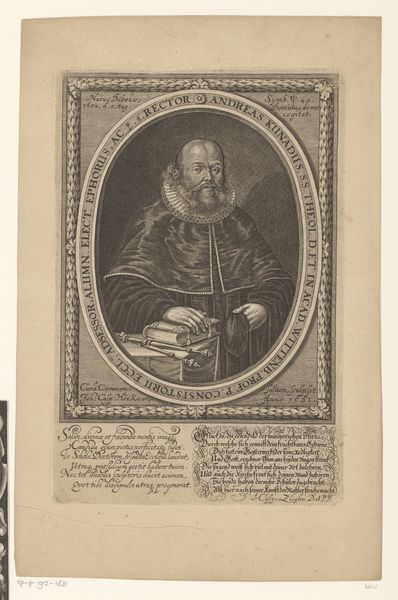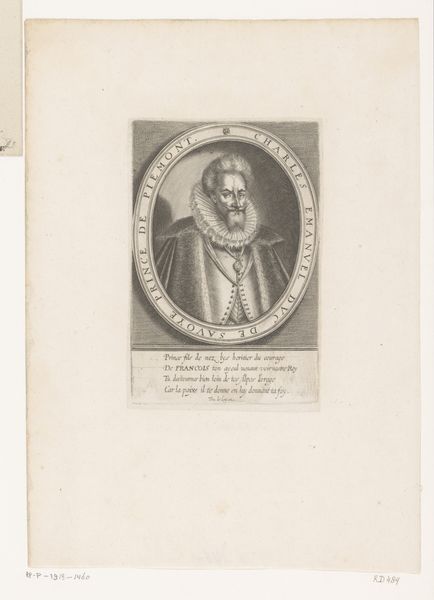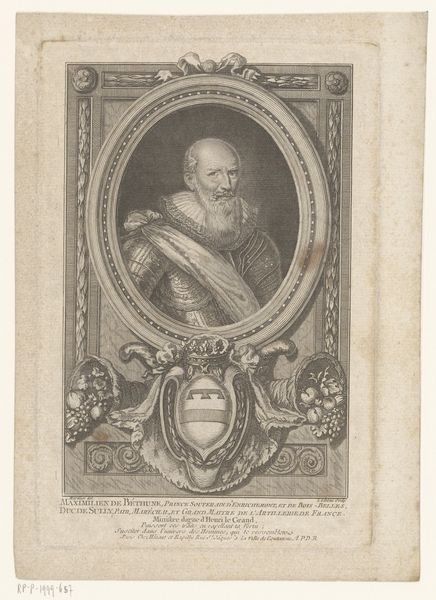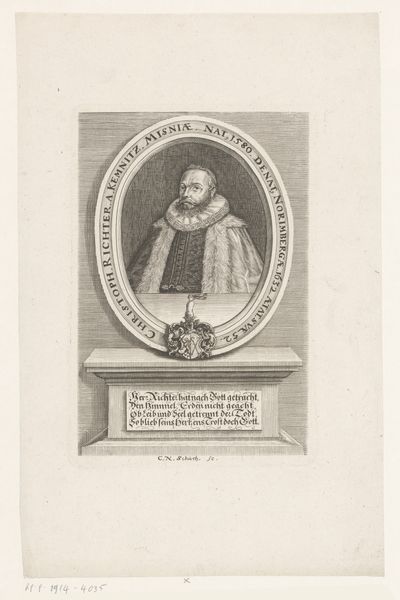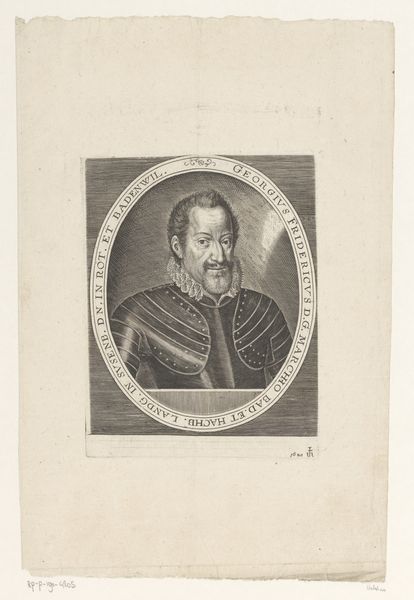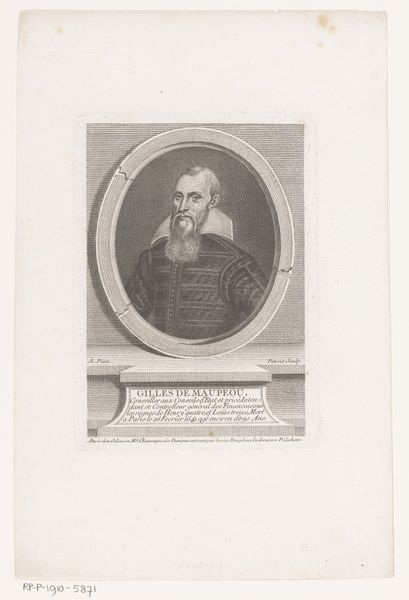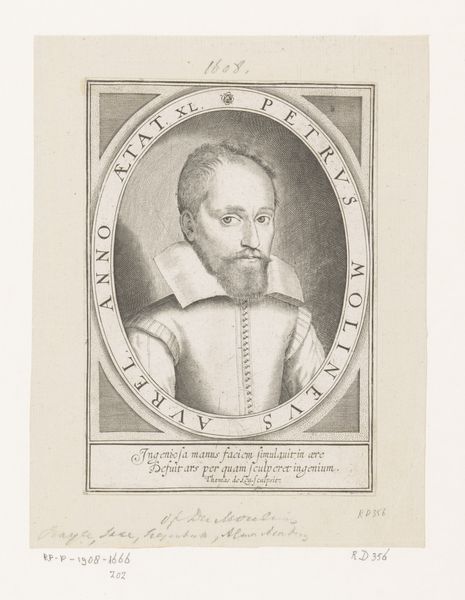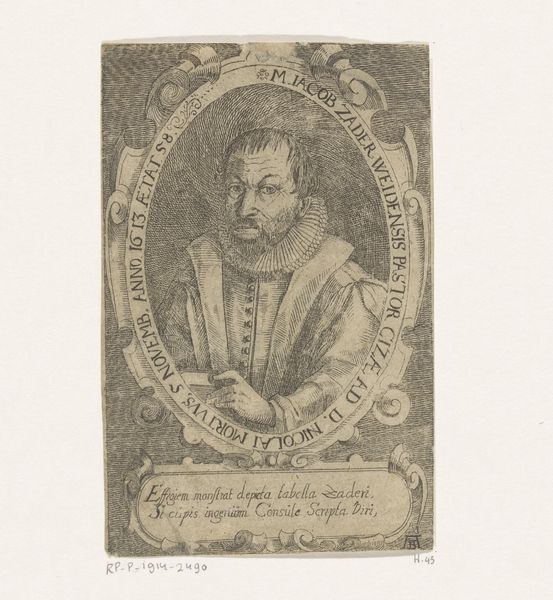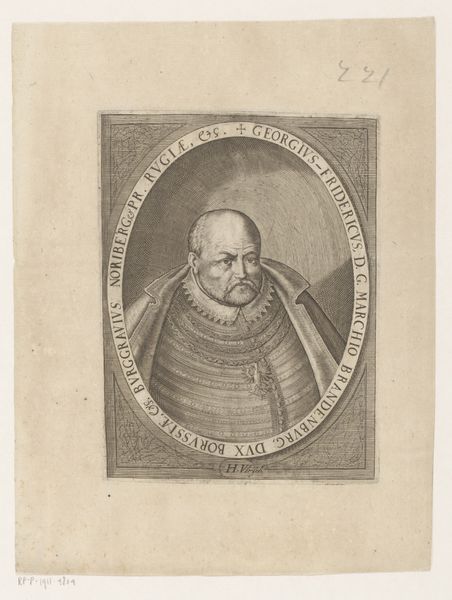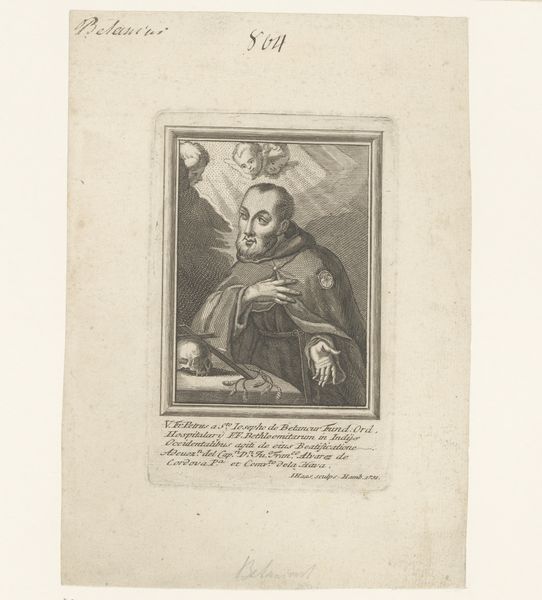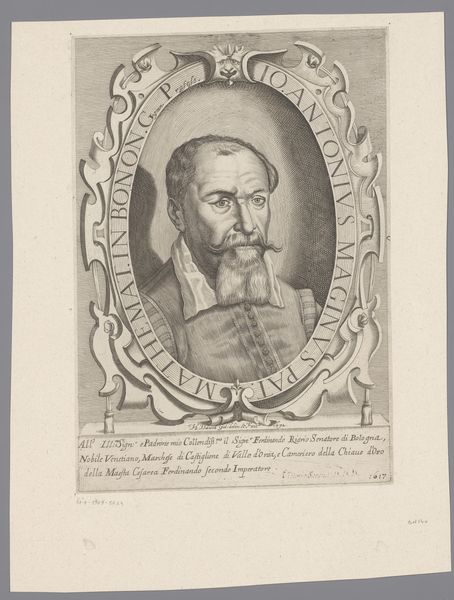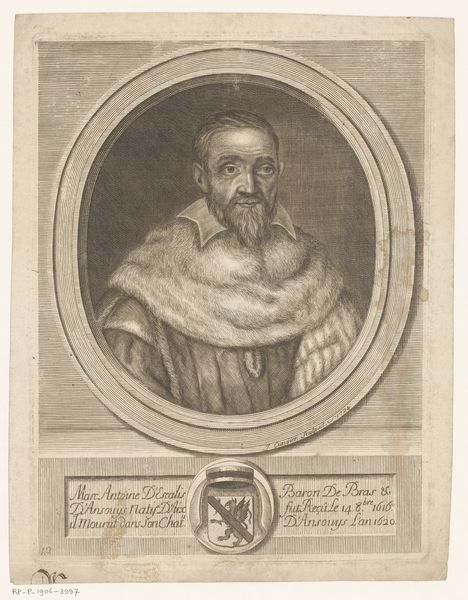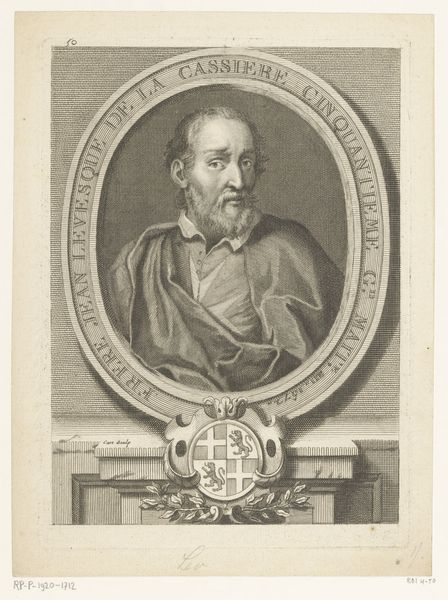
engraving
#
portrait
#
baroque
#
old engraving style
#
figuration
#
northern-renaissance
#
engraving
Dimensions: height 154 mm, width 129 mm
Copyright: Rijks Museum: Open Domain
Editor: Here we have "Portrait of Jean Caffart" made in 1597 by Jacques Granthomme, an engraving housed at the Rijksmuseum. It feels very formal, almost austere, especially given the ruff and the tightly controlled lines of the engraving. What can you tell me about it? Curator: Well, focusing on its materiality, the print exemplifies how engraving facilitated the spread of images and, consequently, ideologies. Think about the copper plate, the labor involved in its meticulous crafting with specialized tools. The act of printing multiple copies made the portrait accessible beyond Caffart’s immediate circle. How do you think that affected his social standing? Editor: It suggests that he was someone important enough to be disseminated. Like, having access to mass media is an indicator of power and prestige, even in the 16th century. Curator: Precisely. It's also important to note the cultural context; printmaking flourished in the Netherlands during this period, due to religious reform, intellectual revolution, and rising wealth. These combined, driving both demand and the means of production for engravings. Can you see how the choice of engraving wasn't merely artistic, but also a product of complex social and economic forces? Editor: Definitely! I hadn't thought about it that way before. Seeing it as not just an image, but a manufactured commodity. Curator: Exactly. And thinking about its preservation and display today in the Rijksmuseum, the art market also adds to the historical meaning of the piece. Editor: That completely shifts how I view the piece, recognizing the social mechanisms required for its existence. Thank you for opening my eyes.
Comments
No comments
Be the first to comment and join the conversation on the ultimate creative platform.
